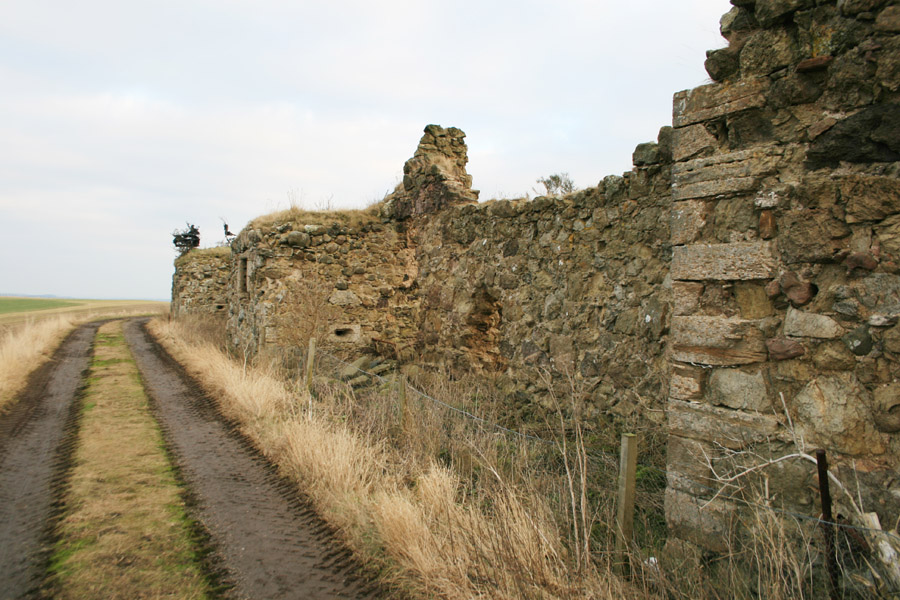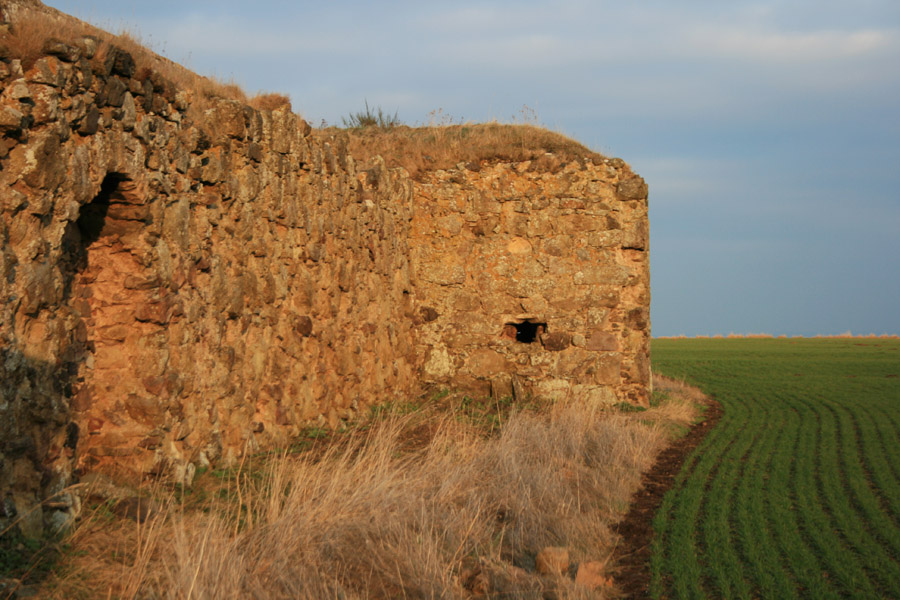|
|
 The Seton's of Barnes, Hailes,
'of Moneylagan' in Ireland, Ireland and
Nova Scotia The Seton's of Barnes, Hailes,
'of Moneylagan' in Ireland, Ireland and
Nova Scotia
George Seton, 3rd
of Barnes, Justice of the Peace in Haddington:
He
was born circa 1626,
and was the second son, from
his father's third marriage to the daughter of Sir John Home of North
Berwick, in 1625. Upon the death of his older brother
Alexander Seton circa 1642 (the troublesome elder son called an
'unnatural son' for his constant quarrels with his father and
siblings), George rose to become an Advocate and Justice of the
Peace in Haddington, as also noted in the records of the Privy
Council. His appointment as a Judge came at the
instigation of his cousin, George, 3rd Earl of Winton, and as a
result was appointed as a trial Judge to oversee the trials of
witchcraft in Haddington along with William Seton the Provost of
Haddington of the Northrig family-line and other local Lairds, in
1649, and renewed again in 1663.
It is not known at the present time,
what his date of marriage was, but it is assumed that he married
early in life, possibly to an Anne Montgomerie (?). He had by her, a son
and heir, Sir John Seton, along with other issue including two
possible sons, one being John, that remain
largely undocumented at the present time.
There were however, great connections
between the Seton's of Barnes and the Seton-Montgomeries of
Eglinton, which began during the lifetime of Sir John Seton 2nd
or Barnes and continued for another 2 generations. In the
case of the following from the University of St. Andrew's to the
Earl of Eglinton, petitioning his influence to assist in a
comprising against the Laird of Barnes:
Mr. Samuel Rutherfurd to Alexander,
sixth Earl of Eglintoun, 15th March 1649. My verie noble
lord — I am loathe to trouble your lordship with solicitationes
; yit since the caise of on of our number urgeth me to it, I
trust your lordship will pardone me to intreat that your
lordship wald befreind on of our universitie, ane honest youth,
Mr. Alexander Pitcarne, regent in the old coledge, who cannot
now leave his chairge to wait on buisienes at Edinburgh, who is
now no lese concerned then to the hazard of almost his whole
proper meanes, in the pasing of a compryseing led against the
Laird of Barnes befoir the Exchequer, under the name of James
Tailzeur, burges of St. Androis, to quhome he hes maid
assignatioun of that sowme restand by Barnes to him : they wer
in diligence prior to other coinprysouris by a monthis space ;
and, if thair proceiding in law hade not bene stoped be ane
invincible impediment (the Kingis death), they had beine on-questionablie
prior still. If thairfoir your lordship wald be pleasit not to
suffer theme to be wronged by persones of greater powir and
nioyan, and accept than- comprysing in the first place befoir
the Exchequer as law and reasone requyres, your lordship sail
shawe great kyndnes to the young mane, and a singular favour to
the vniversitie ; for which and many wtheris of that kynd, I
remaine your lordships, at all obledged obedience, servant in
the Lord, Frorne St. Androis, 15 Merche 1649.
For the noble lord, Earle of Eglintoun. Theis.
In his
volume-Continuation of the History of the House of Seytoun,
Viscount Kingston omits most of the details of the Seton's of
Barnes, and it is thought as a result of the ongoing legal
squabbles between the Seton's of Barnes with the Seton's of
Garleton and where the Barnes family of the time being seen as 'out-of-favour',
and that of the Garleton was considered more 'in-favour'.
However despite the bias, the records in Edinburgh and
Haddington document the significant activities of the family,
including the various legal squabbles between George Seton of
Barnes and his sisters over the patronymic Estate and gifts from
their father.
One such example being in 1680: June 22,
Dame Lilias Seton, and Sir James Ramsay of Logie, her Husband,
against George Seton of Barns. Dame Lilias Seton, and Sir James
Ramsay of Logie, her husband, pursue George Seton of Barns, her
brother, for L. 900 Sterling, promised to her by her father, Sir
John Seton, in a letter to her. Alleged, The letter is
conditional, as shall appear by a writ under his hand, which is
not produced, and non creditur referenti nisi constet de relato;
'ido, It bears, " In case 1 die before you be married, and your
tocher paid;" but ita est, she was married in her father's
lifetime, and he gave io.oco merks of tocher with her, and got a
discharge of it. This being reported, " the Lords find, the
father having after the date of the letter met with his
daughter, and married her, and provided her to a competent
tocher, the letter does not oblige; and therefore assoilzied."
George Seton of Barnes appears as a
Granter in a Bond and Bond of Corroboration, dated in the
Register of Deeds (Issue 20, Volume 12), on March 14th, 1672.
Again in 1680: July 1.—In the action
Dame Lilias Seton against Barns, (22d June 1680.) being beaten
from the letter, they recurred to a new claim, viz. the 5000
merks contained in her infeftment, which albeit it carried that
same quality of the missive, viz. that it should be void and
null when she was married and her tocher paid, yet it behoved to
remain as a debt, because, by an agreement betwixt this Barns
and his father, he did take his father expressly obliged to
purge and obtain her renunciation of that infeftment, which he
never would have done, if he had looked upon it as a right
satisfied and extinct.— Answered, That infeftment is res
hactenus judicata, and out of doors by a decreet absolvitor
inforo, obtained by Barns against it in 1663; and this new
allegeance on the contract betwixt his father and him was
competent then, and being omitted, cannot be proponed now; and
cannot be said to be emergent, or novher veniens notitiam; see
an express and solemn decision on this, 20th January 1631,
Gordon, voce Process. ido, Esto the allegeance were receivable,
(as it is not) nullo modo relevat j for there is nothing more
ordinary.
Vol. XXVII. 63 R
There were continual legal actions between this George Seton of Barnes and
his cousin's, the neighboring Seton's of Garleton, over
encroachment
onto the lands of Barnes by the latter Seton-cousin during the 17th century,
and over a matter of a 'water-gang' used to power George's Mill and
feed cattle, and noted
in Edinburgh Court of Session Records
in 1676, 1677 and 1678.
He also pursued the Irish Estate of
his father, as noted in legal proceedings records in Edinburgh,
against his older half-sister Isobel (called 'Esther') Seton,
the Lady Bearford, and her challenge for acquisition being
founded on her belief that as her father's
eldest surviving child from his principle marriage, she should
be served heiress. The actions from this suit were continued by his grandson, also George Seton, the 5th
and last of Seton Barnes, and which suit was eventually lost and
was the cause of the loss of all of the Estates and lands held
by the Seton's of Barnes in their entirety, although the lands
of Barnes were preserved by having been placed into possession
of George's eldest son and heir, Sir John Seton 4th of Barnes,
and again into Sir John's son also George Seton, 5th or Barnes
possession.
The
pursuit of the Irish Estate of his father was long noted in legal proceedings
and Court of Session records in
Edinburgh, against Sir Arthur Forbes, (later 1st Viscount Granard), where his sister Lady Bearford also sought to acquire rights to the
Barnes estate,
and which
suits eventually cost both he and his heirs of most of the lands and estate's in Amisfield and Ireland.
Sir John Seton
(Seaton) 4th of Barnes: He was in the custom of the time,
married early, apparently around the age of fourteen years. He
became active in the affairs of his father, he succeeded to the
lands of Barnes, to which he placed into his own eldest son's
possession at an early age, but he himself died a relatively
young man in Edinburgh in 1661, his Testament being recorded in
1658 and 1659. He was buried at his request, "with
decency, but without pomp or great show", and interred in the
place of his father's burial at Seton Collegiate Church, and
which was to say, the place reserved for his father.

He was twice married, from his
first marriage he had 2 sons, and there are no daughters known from his
first marriage:
George Seton: his eldest son and
heir from his first
marriage succeeding him.
John Seton:
his second son also from his
first marriage was noted himself as being "John Seton of Barnes" for
sometime after his father's death. John Seton, Younger of Barnes, was married
on the May 30th, 1684, to Anna Lothian and married by the Dean Mr. William Annand
of Edinburgh, as noted
in the Edinburgh Marriage Register. He was in the time of King
James VII, appointed as one of the
Commissioners for the Shire of
Haddington, as recorded as: 'Translation,
1685, 23 April, Edinburgh, Parliament -
Parliamentary Register -
At Edinburgh 13 May 1685 -
Legislation', along with his kinsman and others: For
the shire of Haddington: [George Seton], earl of Winton; ...John Seton of Barns...
John Seaton of St Germans...
etc...
From his second marriage to Lady Margaret Hay: daughter of 9th Earl of Erroll
(and sister to Lady Ann Hay who married George Seton, 3rd Earl of Winton), he
had a son and
daughter, the son being Henry Seaton who eventually fled Scotland during the
Jacobite troubles against the House of Orange, and settled and died in
Virginia in the Colonies.
Henry Seton (also spelt Seaton),
Ancestor of William Winston Seaton of Washington D.C.:
Sir John Seton of Barnes' eldest son by his second marriage, was mistakenly referred
to in America as a son of Seton of Garleton, which was incorrect. Like all of the
Seton's he was staunchly loyal to the Stuart Monarch's and was opposed to
Prince William of Orange and made himself peculiarly obnoxious to the
government by complicity in the Jacobite schemes for his overthrow. After
engaging in the failed Jacobite Resistance, he sought refuge and settled in
the colony of Virginia in the America's in 1690, with a number of other
Scots loyalists.
With the remains of
his inheritance Henry settled first in Gloucester County, on the Pyanketank
in Virginia, during which period he married Elizabeth Todd, the daughter of
a gentleman of standing in the same county. He was noted in the papers of
Mr. George Fitzhugh, of Rappahannock in papers on the " Valleys of
Virginia," who quoted Bishop Meade's list of the early justices and
vestrymen, at that time offices of mark and among whom in Petworth parish is
named 'Henry Seaton' and says: " None but men of substance and consideration
were made vestrymen...". He subsequently moved to an estate on the Mattapony,
County of King William in Virginia, which for several generations continued
to be the home of his descendants. He died leaving an only child, his
son and heir, George Seaton.
DECISIONS OF THE COURT OF SESSION FROM ITS
FIRST INSTITUTION TO THE PRESENT TIME
DIGESTED UNDER PROPER HEADS IN THE FORM OF
A DICTIONARY THE
By
Scotland. Court of Session, Lord Alexander Fraser Tytler of
Woodhouselee, William Maxwell Morison, Esq. Vol. IV.
SECT IX
Reserved Faculties whether reducible upon Death bed.
1662 June 28 Dame Margaret Hay against
George Seaton of Barnes (Sect 9, Entry No 61)
A man disponed his
estate to his heir with a reserved faculty to burden it with a
certain sum. The burden was sustained against the heir, though
the faculty was exercised upon deathbed.
Umquhile Sir John
Seaton of Barnes having provided George Seaton his son by his
contract of marriage to his lands of Barnes some differences
rose amongst them upon fulfilling of some conditions in the
contract. For settling thereof there was a minute extended by a
decreet of the Judges in anno 1658 by which the said Dame
Margaret Hay second wife to the said Sir John was provided to L.
900 Sterling in liferent and it was provided that Sir John might
burden the estate with 10,000 merks to any person he pleased to
which George his son did consent and obliged himself to be a
principal disponer.
Sir John assigned that clause and destinated
that provision for Henry Seaton his son in fee and for the said
Dame Margaret Hay in liferent whereupon she obtained decreet
before the Lords the last session. George suspends the decreet
and raises reduction on this reason that the foresaid clause
gave only power to Sir John to burden the estate with 10,000
merks in which case George was to consent and dispone which can
only be understood of a valid legal and effectual burden thereof
but this assignation is no such burden because it is done in
lecto cegritudinis and so cannot prejudge George who is heir at
least apparent heir to his father. The charger answered, "That
the reason was no way relevant 1st because this provision was in
favours of the defunct's wife and children and so is not a
voluntary deed but an implement of the natural obligation of
providing these idly.
This provision as to the substance of it
is made in the minute and extended contract in the father's
health and there is nothing done on death-bed but the
designation of the person which is nothing else than if a parent
should in his lifetime give out sums payable to his bairns
leaving their names blank and should on death-bed fill up their
names". The suspender answered, "That he opponed the clause not
bearing de presenti a burden of the land but a power to his
father to burden neither having ing any mention of death-bed or
in articulo mortis or at any time during his life and though the
deed on death-bed be in favours of wife and children it hath
never been sustained by the Lords in no time though some have
thought it the most favourable case." The Lords sustained the
provision and repelled the reason of reduction assoilzied
therefrom and found the letters orderly proceeded. |

